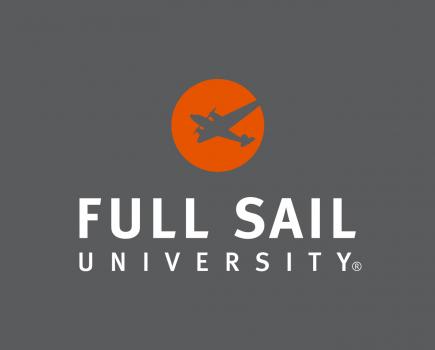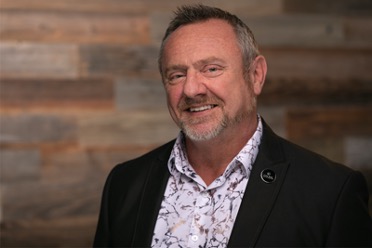
Rick Ramsey is the Education Director for the Visual Arts Program at Full Sail University
Full Sail University has begun building its very own state-of-the-art Virtual Production Studio on its 210+ acre campus. One of the most cutting-edge on campus Virtual Production Studios in the nation, featuring a 40’ wide and 16’ high LED wall, the over $3 Million investment in this facility hosts several features including, 410 tiles on the ground, 90 tiles across its ceiling, and 2.8mm-pixel pitch.
As trends in the film industry continue to evolve, the intersection between film, technology, animation, and gaming becomes more prominent. To achieve cinematic successes like The Mandalorian, production studios must find ways to attract skilled professionals, while higher education institutions must find ways to educate their students on the expanding world of possibility within the industry.
Full Sail University provides students with immersive, fast-paced, and relevant learning experiences that mirror the workflow and collaboration found through today’s rapidly evolving industries. Students spanning numerous degree programs including film, game, animation, technology and show production, will be learning in the Virtual Production Studio to aid in continuing the forward momentum on cinematic advancements.
For our latest Q&A, we catch up with Education Director for the Visual Arts Program, Rick Ramsey. We hope you enjoy.
ACR: Full Sail recently announced its Virtual Production Studio, and it’s one of the most technologically advanced studios of its kind on any college or university campus in the nation. Please tell us all about it?

Rick Ramsey: Over $3 Million of direct capital went into the creation of our Virtual Production Studio which is advanced in both size and technology. The 40-foot wide and 16-foot-high LED wall features an 18-foot straight section. The facility also has 410 tiles on the ground, and 90 tiles across its ceiling. Most of the virtual environments are displayed through the Unreal game engine and can therefore be mapped to look straight to the camera, even on a curved wall, but having a large straight section allows us to use high resolution video as backdrops, as well without distortion. Many industry users of virtual studios have complimented Full Sail on this innovation and stated they wish they had thought of it prior to building their own. We are proud to share this knowledge both with our students and pros in the industry as we are all navigating this new landscape.
Aside from this feature Full Sail’s Virtual Production Studio has a 2.8-pixel pitch that is powered by Brompton processors, one of the most respected processors in the business.
ACR: What is the goal for this studio?
RR: The goal of the Virtual Production Studio is, of course, primarily academic. The university has always had the mission to provide students with the most recent technology available servicing not only the student, but the various industries that employ them. Coupled with that is opportunities for real-world experience. Our new studio has drawn a lot of attention from television and film producers wanting to shoot at the facility and if we can merge their needs with providing students with firsthand learning opportunities and credited experience, we are all for it.
ACR: Describe some of the ways this Virtual Production Studio offers students production experience that would mirror what they would experience in a professional environment:
RR: One of the ways we are seeking to give students a real taste for how the industry uses this technology is to open the door for several degree programs to work together on virtual production projects. To successfully pull off a virtual production, you need to combine disciplines from Film, Game Art, Game Development, Computer Animation, Simulation and Visualization and even Show Production. Cinematographers working with animators to create realistic environments, as well as game developers and artists, familiar with the Unreal game engine, preparing those environments for the LED wall. The interfacing of these disciplines, while done before, are fast becoming essential relationships in virtual production. Also, Full Sail has always forged industry partnerships with production companies in music, gaming, filmmaking and many other entertainment providers who can work with our students to provide that real-world experience.
ACR: When and how do students get to access this studio? That is, is it open only to certain majors or certain projects? Or is it open to all students at any time?
RR: Because the technology is so new and advanced and requires cooperation from many disciplines, the Virtual Production Studio team is working with our faculty who teach in these disciplines on ways we can produce student content that allows and supports real world experience. Fortunately, the virtual production process is evolving to allow these various disciplines to have their moments of focus. In the pre-visualization stage, digital artists create virtual props, set dressings, and environments. These skills are taught in our Computer Animation and Game Art programs. Then these environments are made ready for display in Unreal by adding lighting, color correction, and texture adjustments. Unreal is a staple in our Game Art, Game Development, and Game Design degree programs, giving them the skills to be the LED techs as we move into the tech-visualization stage. Here (at Full Sail University) cinematography and lighting teams (gaffers) work with the LED techs to make sure the virtual world displayed on the LED wall, and actual lighting and set dressings look seamless to the camera. So, in short, many students from many disciplines will work together to create productions instead students creating program specific projects.
ACR: How important to student professional development is access to the various technologies available through this production studio?
RR: Because Full Sail University puts a priority on both professional development and training on current technology, our graduates serve as a talent pipeline for this new, evolving and emerging industry, where we are seeing current graduates in this field advance. We try to expose students to industry professionals via seminars and by providing real-world experiences. This technology is so new that we actually have industry representatives from film, broadcast, animation and gaming coming to us for insight and all that connection simply enhances our ability to stimulate professional development for our students.
ACR: To what degree do you think the addition of this production studio is a "game changer” in terms of prospective student’s considering Full Sail versus similar degree programs at other colleges and universities?
RR: What makes us unique is our focus on current experience. With regard to virtual production, Full Sail has a distinct advantage in that we have been successful in teaching ALL the disciples involved in this new technology and with the new studio, we can bring them all together to create – just like they would do in the industry. The greatest difference from going to a school that teaches film exclusively is that we don’t only lecture about virtual production because we don’t have access to the technology or access to all the disciplines involved in the process, we offer our students the real-world and hands-on experiences.
ACR: Will the studio be made available for professional, industry-led, productions? If so, will students have the opportunity to gain experience working on these productions?
RR: Of course! As I stated earlier, one of the exciting things about Full Sail is being able to partner with industry-led productions. In these partnerships we support the mentoring of students by the professionals and monitored by the faculty. It is an excellent opportunity to get hands-on training, credit on a professional production, and enhance professional development.
ACR: Will students pursuing their degrees online have access to the studio, either remotely or via on-campus residencies?
RR: This is something we are excited about and currently working on. Virtual production takes many forms. From motion capture, to facial mapping, to photogrammetry and studio production, there are many skills that will soon provide remote opportunities for students, as well as industry professionals. At Full Sail we are proactively building the pathway to eventually allow remote students to direct and design productions and production assets through virtual experience.
ACR: What differentiates the Virtual Production Studio from a traditional filmset?
RR: While there are many things virtual production and traditional filmmaking share, (the need for sets, lighting, actors, cameras, etc.), the one big difference is the opportunity to shoot any place in the world or anywhere you can imagine. Paris, a desert, a forest, or even a forest on Mars. Nothing is outside of reach in a virtual studio. This allows artists like screenwriters, set designers, and cinematographers (all of which are our students), to think of almost limitless possibilities for storytelling while still staying true to the practice of the skills they already have. Virtual production invites us to think in new ways to evoke both our creative process and technical experience. Visual effects can be experienced with a level of realism for both directors and talent and all in real time. Why use a green screen when you can put the bridge of a starship or submarine up for everyone to experience. Virtual production allows us to experience our movies on set, as they are being made, and that, to me is the biggest difference between the two.
Check out more interviews at The Animation Career Review Interview Series.
